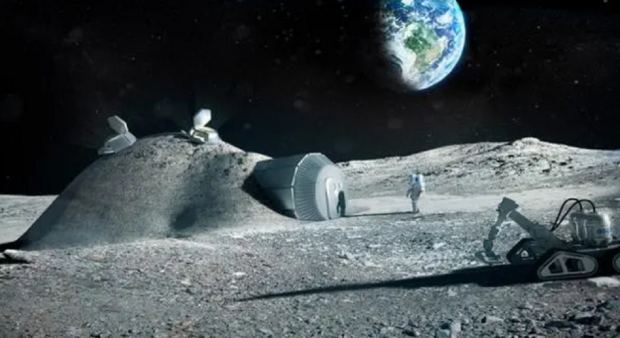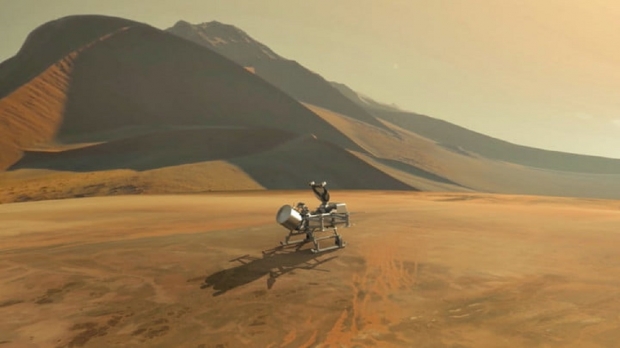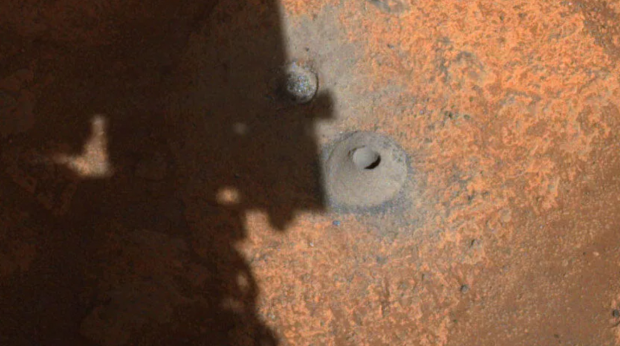Science, Space, Health & Robotics News - Page 289
NASA's latest cargo trip to the ISS contains a game-changing machine
The latest cargo trip to the International Space Station contains a piece of technology that may very well pave the road for future colonists of our moon and other planets.
NASA is currently in preparation of constructing some sort of base on the moon that humans will be able to operate in. However, before construction gets underway, there are many tests that the space agency needs to do to gather the best and most efficient understanding of how to begin. One of the pieces of technology that needs to be tested is a 3D printer on the International Space Station.
This isn't any normal 3D printer, though, as it's designed to print regolith, (loose soil or rock) from the moon or other planets. The idea behind the printer is to reduce the amount of materials that will need to be transported to the moon or another planet. If the printing is successful, we could see colonists on the moon or Mars printing out structures using the loose soil or rock around them. If you are interested in reading more about this story, check out this link here.
Continue reading: NASA's latest cargo trip to the ISS contains a game-changing machine (full post)
NASA releases 'dark' images of Earth's 'closest neighbor'
Earth's closest neighbor has had its photo taken by NASA and the European Space Agency's (ESA) Solar Orbiter Heliospheric Imager telescope.
According to a new post on NASA's website, NASA and ESA's Solar Orbiter spacecraft flew past Venus 4,967 miles from the planet's surface. During the days leading up to its approach, the Solar Orbiter snapped several images of it, which can be seen above. Looking at the image, we can see Venus' nightside, which is the large blacked-out semi-circle, and the Sun behind it.
Phillip Hess, an astrophysicist at the Naval Research Laboratory in Washington, D.C, said, "Ideally, we would have been able to resolve some features on the nightside of the planet, but there was just too much signal from the dayside. Only a sliver of the dayside appears in the images, but it reflects enough sunlight to cause the bright crescent and the diffracted rays that seem to come from the surface." NASA also mentions that there are two bright stars in the background of the time. The star furthermost to the right is Omicron Tauri, and above it to the left is Xi Tauri.
Continue reading: NASA releases 'dark' images of Earth's 'closest neighbor' (full post)
NASA will sniff out life on a moon that is believed to have water
NASA will be sending a new space probe to a distant moon that is believed to have water in search of ancient signs of life.
NASA plans to launch a rotorcraft named Dragonfly to Saturn's largest and the solar system's second-largest moon, Titan, in 2027. Researchers believe that Titan possibly has liquid water beneath its icy surface and that within that water could be chemical biosignatures that indicate life is/was present. Alex Hayes, associate professor of astronomy in the College of Arts and Sciences and a Dragonfly co-investigator, said, "Titan represents an explorer's utopia."
He continued, "The science questions we have for Titan are very broad because we don't know much about what is actually going on at the surface yet. For every question we answered during the Cassini mission's exploration of Titan from Saturn orbit, we gained 10 new ones." In addition to looking for signs of life, Dragonfly will also be inspecting the moon's methane cycle as well as the chemical make-up of Titan's strange atmosphere.
Continue reading: NASA will sniff out life on a moon that is believed to have water (full post)
NASA sends time capsule of humans now, to humans of the distant future
Humans of the future will be very different from what we are today. They will possess much more advanced technology and will most likely have a deeper understanding of the universe.
However, humans of the future will probably still be interested in the history of our species, which is why NASA is sending a message to us of the future. This isn't the first time NASA has created a time capsule that contains what humans have understood so far and sent it out into the void of space. In the 1970s, NASA's first four spacecrafts to leave our solar system contained time capsules plaques that have messages to alien life.
Now, NASA is doing it again, but this time the space agency isn't planning on sending a message to aliens but to human astro-archeologists of the future. The mission is called "Lucy," named after the fossilized human ancestor discovered in 1974. NASA will launch the Lucy in 2033, and its destination will be six asteroids that are on six separate orbits of the sun. Once Lucy has passed those asteroids, it will reside among the Trojan asteroids for possibly millions of years, or until it's discovered by someone or something.
Continue reading: NASA sends time capsule of humans now, to humans of the distant future (full post)
'Time traveler from year 2714' says aliens will come to Earth for war
An individual has claimed that he is a "real-life time traveler from 2714" and that aliens will soon be arriving to begin an intergalactic war.
As you have probably already guessed, the time traveler claims have been posted on TikTok and has gone viral despite its obvious lack of scientific evidence to back up the claims. The time traveler claims that invasion will come with a meteor shower, as "one of the meteors" will look different than the others - this will be a "spaceship landing on Earth starting preparations for the Nozic War".
The time traveler claims that the meteor shower will begin on August 11, 2021, and will continue for two weeks. This isn't the first time the TikTok account has claimed to be a time traveler, only a few weeks ago the user claimed that humans would get superpowers in 2021. These videos going as viral as they do show that even baseless claims without any scientific evidence to back them up can still get traction online. Whether that traction is deserved is another question entirely.
Continue reading: 'Time traveler from year 2714' says aliens will come to Earth for war (full post)
Why are Bill Gates and Jeff Bezos paying millions for specific metals?
Billionaires such as Microsoft founder Bill Gates and Amazon founder Jeff Bezos are paying millions for certain metals, but why?
One word, electric vehicles. A mineral company that is financially backed by billionaires such as Jeff Bezos and Bill Gates has agreed in a joint venture with mining firm Bluejay. The mineral mining company KoBold Metals will be spending $15 million to search for nickel, copper, cobalt, and platinum at the Disko-Nuussuaq project in Central West Greenland.
Blujay said in a statement that in return for spending the $15 million, KoBold Metals will have a 51% stake in the project. For those that don't know, KoBold Metals is a privately-owned company that has been "recognized in 2021 as a Technology Pioneer by the World Economic Forum and as one of the 100 most promising private artificial intelligence companies in the world by CB Insights." Additionally, KoBold Metals is the only mining company using artificial intelligence.
Continue reading: Why are Bill Gates and Jeff Bezos paying millions for specific metals? (full post)
Glass that's harder than diamonds created, may be used for windows
Diamonds are renowned as some of the hardest gems people can get their hands-on, but what if glass could be harder than a diamond?
Researchers from Yanshan University have created that glass, and according to test results, the glass is actually twice as hard as a diamond. The team of Chinese researchers only recently published a study in the National Science Review that states the new material is made entirely out of carbon and is a yellow-colored glass called AM-III.
With the material, the team of researchers tested it with the Vickers hardness test, which scores diamonds between 50 and 70 gigapascals. As for the researcher's material, the yellow-tinted glass scored 113 gigapascals, making its strength "comparable in strength to diamond and superior to the other known strongest materials", noted led author Professor Tian Yongjun of Yanshan University in the study.
Continue reading: Glass that's harder than diamonds created, may be used for windows (full post)
This asteroid has a higher chance to hit Earth than previously thought
A new study published in the scientific journal Icarus has found that one of the asteroids that are likely to hit Earth has a higher chance than previously thought.
According to researchers who used data from NASA's OSIRIS-REx spacecraft, the asteroid named Bennu was found to have a 1-in-750 chance of hitting Earth within the next 300 years. The team of researchers, led by Davide Farnocchia, a navigation engineer at NASA's Jet Propulsion Laboratory that has successfully been able to pinpoint the distance between Bennu and Earth within about seven feet, which proves his estimations for trajectory are ultraprecise.
Dante Lauretta, OSIRIS-REx's principal investigator, and the study's senior author, said, "Bennu is by far the best characterized asteroid in the solar system. We know where it's going to be over 100 years into the future, within meters. No other object in the solar system has that level of fidelity to its orbital solution-even Earth!"
Continue reading: This asteroid has a higher chance to hit Earth than previously thought (full post)
Date found for mile-wide asteroid's highest chance of hitting Earth
Researchers have been watching an asteroid orbit the some for quite some time, but now new research has pinpointed the date for when that asteroid has the highest chance of colliding with Earth.
According to a new study published in the journal Icarus, researchers used data acquired by NASA's OSIRIS-REx spacecraft to measure the trajectory of the mile-wide asteroid named Bennu. Bennu has been orbiting the Sun for hundreds of millions of years, but according to researchers' highly accurate estimations, Bennu has a chance of colliding with Earth in the somewhat relative future.
The researchers calculated Bennu's trajectory and found that there is a 1-in-750 chance that the asteroid will collide with Earth over the next 300 years, which was a much higher probability than researchers previously estimated. The scientists also found that all of the closest encounters with Bennu will happen during the late 2200s and the early 2300s. Additionally, the researchers managed to boil the data down to a single date - September 24, 2182. During the afternoon on that day is the single likeliest time for impact as Bennu has a 1-in-2,700 chance of hitting Earth.
Continue reading: Date found for mile-wide asteroid's highest chance of hitting Earth (full post)
New Mars rover's first sample vanished, but NASA thinks it knows why
NASA researchers and engineers have been left in disbelief after the space agency's new rover Perseverance collected its first martian sample, only to discover the sample of rock vanished.
Last week, NASA's Perseverance rover began its long search for signs of ancient martian life in the Jezero Crater as researchers believe the crater was once a large lake that may have hosted life. Perseverance used its instrument to drill into the ground to collect a rock sample from deep beneath the martian surface, but when the sample tube was raised to the surface, nothing was inside of it.
NASA has said that the problem doesn't lay with Perseverance, but actually with the rock that the rover is trying to sample from. According to Louise Jandura, chief engineer for sampling and caching, "It appears that the rock was not robust enough to produce a core". Essentially, NASA believes that the rock that was drilled into was much too powdery to be collected. "The material from the desired core is likely either in the bottom of the hole, in the cuttings pile, or some combination of both," Jandura said.
Continue reading: New Mars rover's first sample vanished, but NASA thinks it knows why (full post)











